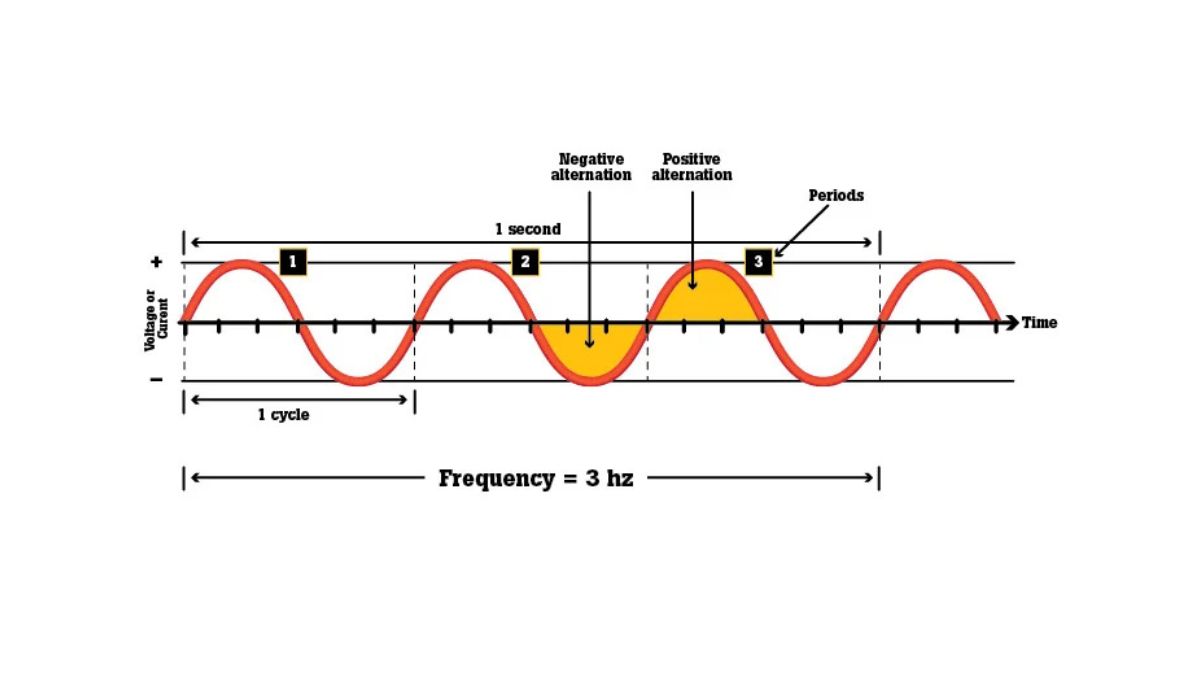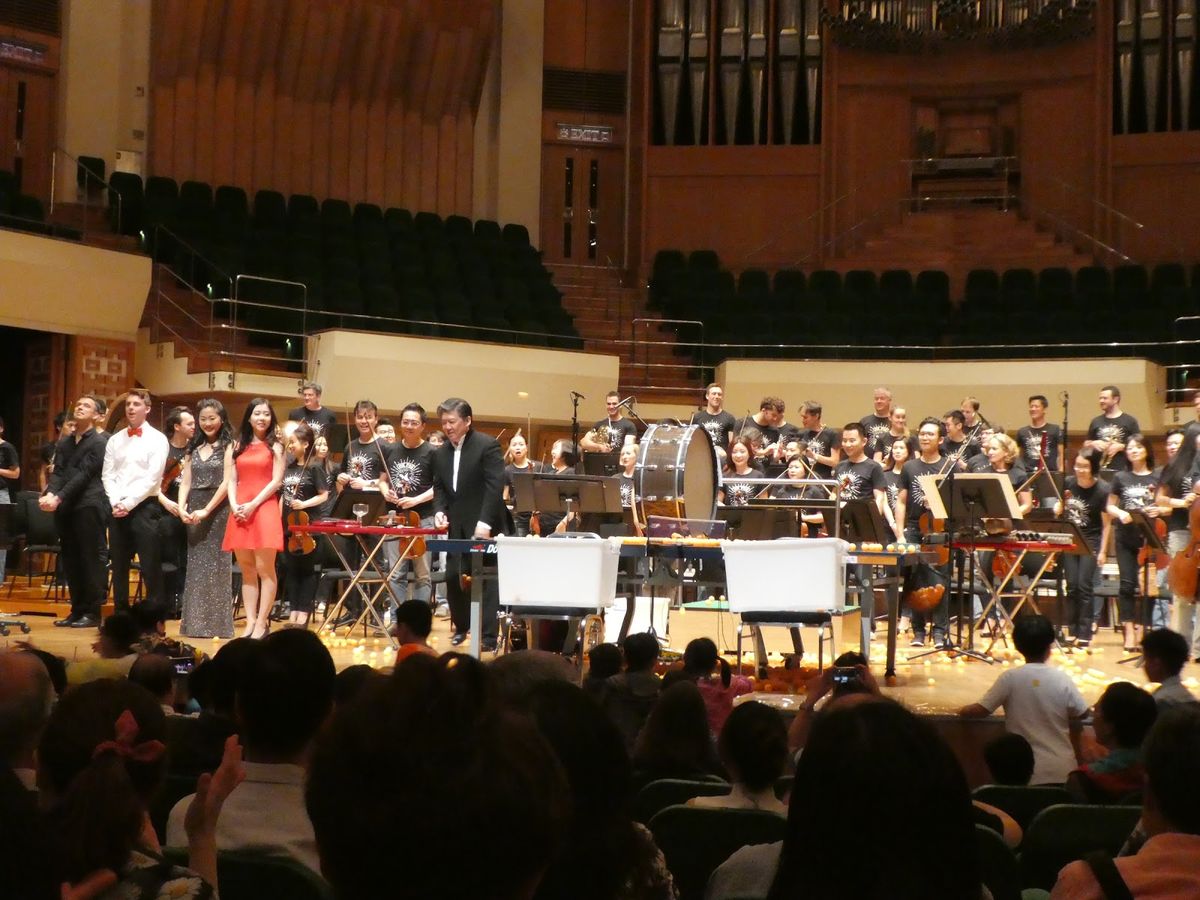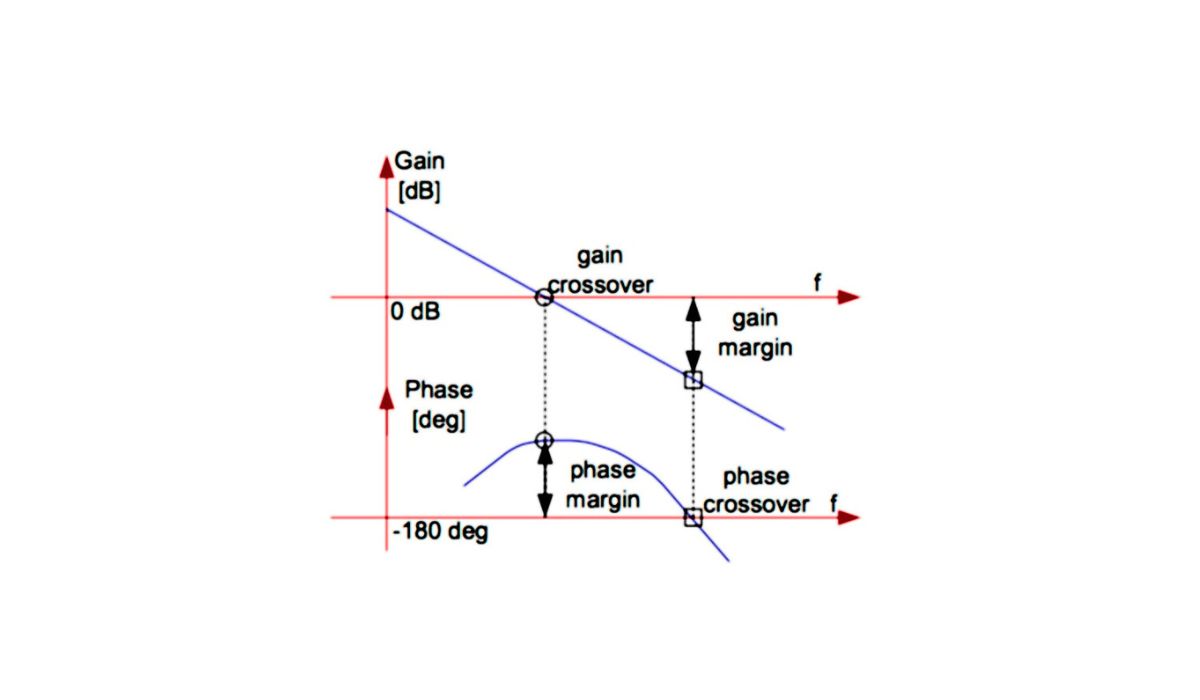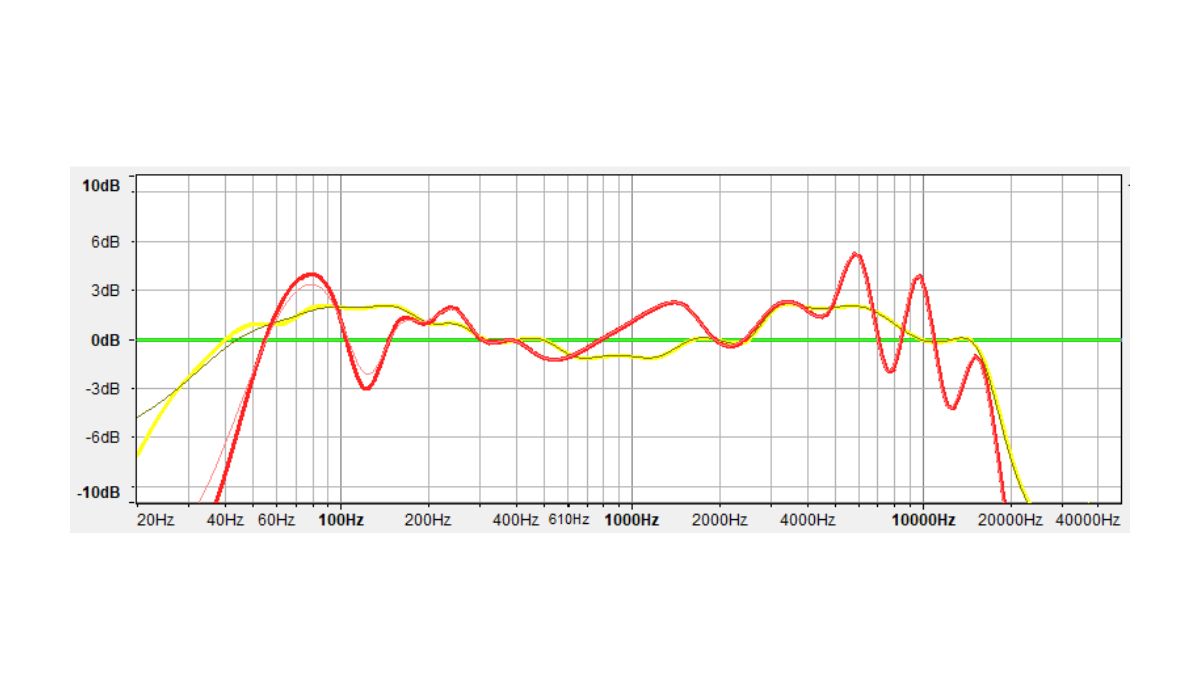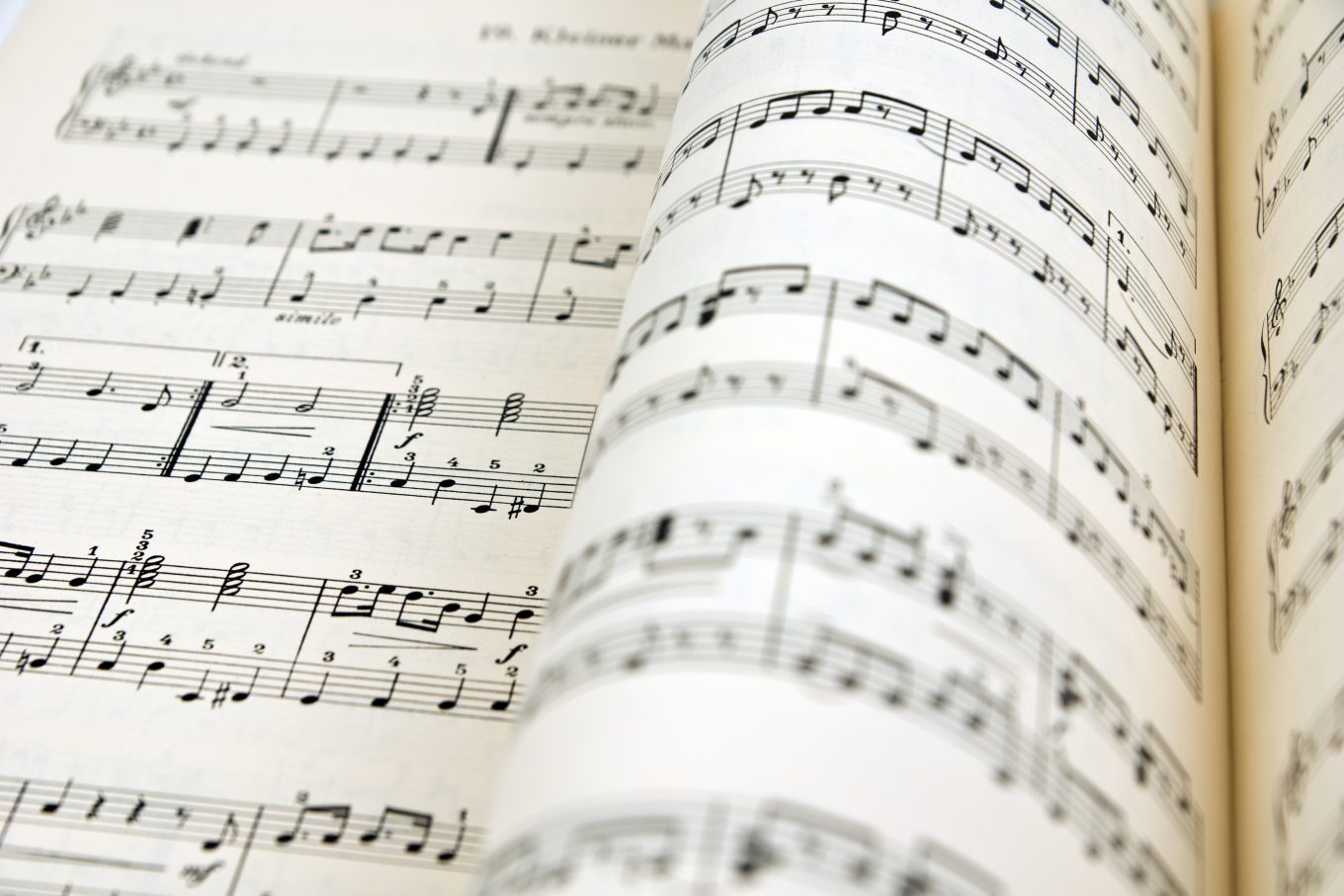

Classical
What Frequency Is Classical Music
Modified: February 24, 2024
Discover the frequency of classical music and explore the essence of this timeless genre. Dive into the world of classical compositions and unravel their melodic allure.
(Many of the links in this article redirect to a specific reviewed product. Your purchase of these products through affiliate links helps to generate commission for AudioLover.com, at no extra cost. Learn more)
Table of Contents
- Introduction
- The Origins of Classical Music
- The Characteristics of Classical Music
- The Different Periods of Classical Music
- The Role of Frequency in Classical Music
- The Frequency Range of Classical Instruments
- The Impact of Frequency on Musical Emotions
- The Influence of Frequency on Classical Compositions
- The Evolution of Frequency in Modern Classical Music
- Conclusion
Introduction
Classical music, with its rich history and timeless allure, has captivated audiences for centuries. This genre of music is known for its complexity, emotional depth, and technical brilliance. But have you ever wondered what exactly defines classical music? And how does frequency play a role in creating its distinctive sound? In this article, we will explore the fascinating relationship between classical music and frequency.
Classical music refers to a specific style of music that originated in Western Europe during the 18th and early 19th centuries. It is characterized by its adherence to strict compositional rules, intricate harmonies, and the use of instruments such as the piano, violin, and cello to create its melodic beauty. The genre encompasses a vast repertoire of symphonies, concertos, sonatas, and operas created by legendary composers like Mozart, Beethoven, and Bach.
At its core, classical music is a unique blend of artistry and technicality. It harmoniously combines different musical elements, such as melody, harmony, rhythm, and texture, to create a multi-dimensional and emotionally evocative experience for the listener. And one crucial element that contributes to the magical essence of classical music is frequency.
In the realm of music, frequency refers to the number of vibrations or cycles per second that a sound wave produces. It is measured in Hertz (Hz). Different musical notes are associated with specific frequencies, and they play a fundamental role in shaping the overall sound and tonality of classical music.
The Origins of Classical Music
Classical music has deep roots that date back to the medieval and Renaissance periods. The evolution of classical music can be traced through various musical eras, each contributing its own unique characteristics and styles.
The Baroque era, spanning from the early 1600s to the mid-1700s, was marked by ornate compositions, elaborate ornamentation, and intricate counterpoint. Prominent composers of this era include Johann Sebastian Bach, George Frideric Handel, and Antonio Vivaldi. Baroque music often featured complex melodies and dramatic dynamics, creating a sense of grandeur and emotional depth.
The Classical era emerged in the late 18th century, characterized by a simpler and more refined style of music. Composers such as Wolfgang Amadeus Mozart and Joseph Haydn were central figures of this era. The emphasis shifted from the elaborate ornamentation of the Baroque era to a focus on balanced melodies, form, and structure. Classical music became more accessible to a wider audience, as it was performed in concert halls and enjoyed by members of the middle class.
The Romantic era followed, spanning from the early 19th century to the early 20th century. This era marked a departure from the restraint of the Classical era and embraced heightened emotional expression. Composers like Ludwig van Beethoven, Franz Schubert, and Pyotr Ilyich Tchaikovsky elevated classical music to new heights, infusing their compositions with intense passion and complex harmonic progressions. The Romantic period brought forth a range of emotional expressions, from sublime beauty to dark, brooding tones.
As classical music evolved through these different eras, its sound and style also changed. Yet, throughout its history, classical music has always been rooted in meticulous craftsmanship, technical proficiency, and a deep understanding of musical theory.
Now that we have explored the origins of classical music, let’s delve into the characteristics that define this beloved genre.
The Characteristics of Classical Music
Classical music is characterized by several distinctive features that set it apart from other genres. These characteristics not only define the style of composition but also contribute to the emotional and intellectual impact of the music.
1. Balance and Symmetry: Classical music embodies a sense of balance and symmetry in its compositions. The careful arrangement of musical elements, such as melody, harmony, and rhythm, creates a harmonious and well-structured musical journey for the listener. The use of repeated motifs and clear musical phrases adds a sense of coherence and order to the compositions.
2. Clarity and Simplicity: Classical music often exhibits clarity and simplicity in its melodies. The melodies are typically memorable, with a clear and straightforward musical line that can be easily followed and appreciated by the listener. This simplicity allows the melodies to shine and convey the intended emotions without unnecessary complexity.
3. Contrasts and Dynamics: Classical music utilizes contrasts and dynamics to create emotional impact. Through variations in volume, from soft and delicate passages to powerful and grandiose moments, composers evoke a wide range of emotions and intensify the listener’s experience. The juxtaposition of different musical ideas and moods adds depth and complexity to the compositions.
4. Structural Form: Classical music often follows established structural forms, such as sonata form, concerto form, and symphony form. These forms provide a framework for the organization and development of musical ideas throughout a composition. They help create a sense of progression, tension, and resolution, enhancing the overall emotional impact and musical satisfaction.
5. Instrumentation: Classical music features a diverse range of instruments, including string, woodwind, brass, and percussion instruments. Composers carefully select instruments to achieve a desired timbre and blend, allowing for various expressive possibilities. The choice of instruments contributes to the overall sonic palette and adds depth and richness to the music.
These characteristics, among others, contribute to the unique beauty and enduring appeal of classical music. The genre’s ability to evoke a wide range of emotions, engage the intellect, and transport the listener to different emotional landscapes is part of what makes classical music a timeless art form.
Now that we have explored the characteristics of classical music, let’s delve into the different periods of classical music and how they have shaped the genre as we know it today.
The Different Periods of Classical Music
Classical music has gone through several distinct periods, each marked by its own unique style, characteristics, and influential composers. These periods played a crucial role in shaping the evolution of classical music and its enduring legacy.
1. Baroque Period (1600-1750): The Baroque period was characterized by grandeur, ornate compositions, and intricate counterpoint. Prominent composers during this period included Johann Sebastian Bach, George Frideric Handel, and Antonio Vivaldi. Baroque music often featured complex melodies, intricate ornamentation, and a rich harmonic palette. The melodies were often supported by a basso continuo and performed on harpsichords or pipe organs.
2. Classical Period (1750-1820): The Classical period marked a shift away from the elaborate ornamentation of the Baroque era to a more refined and balanced style. Composers such as Wolfgang Amadeus Mozart, Joseph Haydn, and Ludwig van Beethoven were central figures of this period. Classical music became more accessible to a wider audience, as it was performed in concert halls and enjoyed by the middle class. The music of this era featured clear melodies, balanced forms, and a focus on structure and clarity of expression.
3. Romantic Period (1800-1910): The Romantic period represented a departure from the restraint of the Classical era and embraced heightened emotional expression. Composers like Beethoven, Franz Schubert, and Pyotr Ilyich Tchaikovsky pushed the boundaries of classical music, incorporating intense emotions, richly expressive melodies, and expanded harmonic possibilities. The music of this period reflected the ideals of individualism, passion, and emotional storytelling.
4. Modern and Contemporary Periods (20th century-present): The 20th century saw the emergence of diverse styles in classical music, with composers experimenting with new forms, tonalities, and approaches. Composers like Igor Stravinsky, Arnold Schoenberg, and John Adams pushed the boundaries of traditional composition, exploring atonal and avant-garde techniques. The contemporary period continues to evolve, with composers incorporating elements from other genres, utilizing technology, and exploring new sonic possibilities.
These distinct periods in classical music represent significant milestones in the development of the genre. Each period brought forth innovative ideas, techniques, and compositions that continue to inspire and fascinate audiences today.
Now that we have discussed the different periods of classical music, let’s dive deeper into the role of frequency in creating the unique sounds of classical instruments.
The Role of Frequency in Classical Music
In the realm of classical music, frequency plays a fundamental role in creating the distinctive sounds of various instruments and shaping the overall tonality of compositions. The specific frequencies produced by musical notes contribute to the diverse range of emotions, moods, and textures found within classical music.
Each musical note corresponds to a specific frequency, measured in Hertz (Hz). The frequency determines the pitch of the note, with higher frequencies producing higher-pitched sounds and lower frequencies producing lower-pitched sounds. For example, the A above middle C on a piano typically vibrates at a frequency of 440 Hz.
Instruments in the orchestra have different frequency ranges, which contribute to their unique sounds and timbres. For instance, string instruments like the violin and cello have a broad frequency range, allowing them to produce warm, rich, and expressive tones. Brass instruments, such as the trumpet and trombone, have a more limited frequency range but possess a powerful and piercing sound. Woodwind instruments, including the flute and clarinet, fall somewhere in between, combining a wide range of frequencies with distinctive timbres.
Composers and musicians carefully select and combine instruments with different frequency ranges to create a balanced and harmonious orchestral sound. The choice of instruments not only determines the melodies and harmonies of a composition but also influences the emotional impact and overall aesthetic of the music.
Moreover, the manipulation of frequency within classical music can also elicit various emotional responses from the listener. For instance, a higher frequency or pitch is often associated with feelings of brightness, excitement, and intensity. On the other hand, lower frequencies or pitches are often linked to moods of introspection, depth, and melancholy. Composers strategically utilize these frequency ranges to evoke specific emotions and colors within their compositions.
Additionally, frequency plays a role in the harmonic and melodic relationships within classical music. The intervals between notes are defined by the ratios of their frequencies. For example, the interval of a perfect fifth is created when one note’s frequency is 1.5 times that of another note. These harmonic relationships contribute to the overall sense of consonance or dissonance within a piece of music.
Frequency also influences the perception of rhythm and tempo. The speed at which musical vibrations occur determines the tempo of a piece. Different tempos evoke different moods and intensities, with faster tempos often associated with energy and excitement, and slower tempos conveying a sense of calmness and tranquility.
The role of frequency in classical music is multi-dimensional, defining the pitch and timbre of instruments, shaping the emotional landscape, and influencing the harmonic and rhythmic structures of compositions. Understanding the intricacies of frequency allows us to appreciate the complex and nuanced world of classical music.
Now that we have explored the role of frequency, let’s delve into the specific frequency ranges of classical instruments and their impact on the overall orchestral sound.
The Frequency Range of Classical Instruments
Classical instruments span a wide range of frequencies, each with its unique characteristics and sonic qualities. Understanding the frequency range of these instruments helps us appreciate the diverse timbres and textures that contribute to the richness of classical music.
String instruments, such as the violin, viola, cello, and double bass, possess a broad frequency range. The violin, for example, can produce pitches ranging from around 196 Hz for its lowest string (G) to over 4,000 Hz for its highest string (E). This wide frequency range allows string instruments to produce warm and expressive tones, from deep and resonant low notes to soaring and brilliant high notes. The versatility of string instruments makes them prominent in both melodic and harmonic roles within classical compositions.
Woodwind instruments, including the flute, clarinet, oboe, and bassoon, have a diverse frequency range as well. The flute, for instance, can produce pitches ranging from around 262 Hz (C4) to over 2,500 Hz (A6). The distinct timbres of different woodwind instruments come from their varying frequency ranges, with the flute producing bright and shimmering tones, the clarinet offering warm and lyrical sounds, and the bassoon providing rich and resonant low frequencies. Woodwind instruments are known for their expressive capabilities and their ability to blend seamlessly with other instruments in an orchestral setting.
Brass instruments, which include the trumpet, trombone, French horn, and tuba, have a more limited frequency range compared to strings and woodwinds. The trumpet, for example, ranges from around 261 Hz (C4) to approximately 1,176 Hz (E6). Brass instruments excel in producing powerful and bold sounds due to their focused frequencies and resonant qualities. They are often used to add brilliance and grandeur to orchestral compositions.
Percussion instruments, such as the timpani, snare drum, and cymbals, do not have specific frequency ranges like melodic instruments. Instead, they contribute to the rhythmic and textural elements of classical music. However, percussion instruments can still produce distinct harmonics and overtones that add depth and color to the overall sound of an ensemble.
Understanding the frequency ranges of classical instruments allows composers and musicians to orchestrate and balance the various sonic elements effectively. It ensures that each instrument is used to its full potential, creating a captivating and harmonious musical experience.
Now that we have explored the frequency ranges of classical instruments, let’s delve into the impact of frequency on the emotional and expressive qualities of classical compositions.
The Impact of Frequency on Musical Emotions
Frequency, as an essential element of classical music, plays a significant role in evoking various emotional and psychological responses in listeners. The manipulation of frequency within compositions can elicit a range of emotions, from joy and excitement to sadness and introspection.
Higher frequencies, associated with higher-pitched sounds, often create a sense of brightness and energy. These frequencies tend to evoke feelings of excitement, cheerfulness, and even exhilaration. When composers utilize higher frequencies, they can create a sense of liveliness and vibrant energy within a piece. For example, the use of high-pitched strings or woodwinds is often associated with a sense of lightness and playfulness.
On the other hand, lower frequencies, linked to lower-pitched sounds, often evoke a sense of depth, solemnity, and introspection. These frequencies can elicit feelings of calmness, melancholy, and even sadness. Composers often use deeper tones and lower-pitched instruments to create a sense of gravity and emotional weight within a composition. The resonance of low-pitched strings or the deep timbre of the bassoon can convey a sense of introspection or evoke a somber mood.
Additionally, the manipulation of frequency can also contribute to the overall mood and atmosphere of a classical piece. For instance, rapid changes in pitch and frequency can build tension and anticipation, creating a sense of drama or suspense. Vivid and expressive melodies that traverse various frequency ranges can evoke a wide spectrum of emotions within a single composition.
Furthermore, the interaction of frequencies in harmony and melody can elicit emotional responses. Certain combinations of frequencies can create consonance or dissonance, affecting the perceived stability or tension within a piece. Harmonic progressions that resolve from dissonance to consonance can evoke feelings of resolution and satisfaction, while unexpected dissonant intervals can create a sense of tension and anticipation.
The impact of frequency on musical emotions is also influenced by personal and cultural associations. Different cultures and individuals may have varying emotional responses to specific frequencies based on their experiences, background, and conditioning.
By skillfully manipulating frequency within their compositions, composers can evoke and enhance specific emotions, tell stories, and convey their intended messages to the audience. The interplay of different frequencies and the emotions they elicit make classical music a powerful medium for expressing and connecting with a range of human experiences.
Now that we have explored the impact of frequency on emotional responses, let’s delve into how frequency influences the creation and structure of classical compositions.
The Influence of Frequency on Classical Compositions
Frequency, as a foundational element of classical music, holds significant influence on the creation and structure of compositions. Composers carefully manipulate frequency to establish the melodic, harmonic, and rhythmic framework of their works, shaping the overall musical expression and narrative.
One primary way frequency influences classical compositions is through the choice and progression of melodies. Melodies are sequences of musical tones that follow a specific order of frequencies. Composers select specific note arrangements to establish memorable and expressive melodies in their compositions. The selection of high or low frequencies within the melody can evoke different emotions and moods, allowing composers to convey their intended expression.
Frequency also plays a vital role in defining harmony within classical compositions. Harmonies are created when different frequencies and their collections interact and combine, producing chords and chord progressions. The utilization of specific frequencies determines the relationships between different musical parts and the overall tonal quality of the composition, allowing composers to convey varied emotional landscapes. Through the deliberate use of consonance and dissonance, composers manipulate frequency to create tension, release, and emotional impact within their works.
Rhythm, an essential component of classical music, is also influenced by frequency. The duration and temporal arrangement of musical events are determined by the timing and placement of frequencies. Composers utilize specific rhythmic patterns to create a sense of structure, drive, and energy within their compositions. By manipulating the frequency of repeated motifs or altering the rhythmic density, composers can emphasize different musical ideas and accentuate the emotional impact of the piece.
In addition to these compositional aspects, the arrangement and orchestration of frequency within classical compositions impact the overall sonic palette. Composers strategically select and combine instruments with specific frequency ranges to create balanced and harmonious textures. The interaction of different frequency ranges from diverse instruments contributes to the richness, balance, and timbral variety within orchestral works. The interplay of frequencies between instruments creates a symphonic environment that enhances the overall musical experience for the listener.
Moreover, frequency also influences the structure and form of classical compositions. Composers often employ recurring melodic motifs or themes throughout a piece, varying the frequency and transposition of these motifs to create unity and coherence. The use of contrasting frequencies, such as moving from high frequencies to low frequencies or vice versa, contributes to sectional changes within a composition, enhancing the sense of progression and narrative development.
Overall, frequency is a foundational element that shapes the melodic, harmonic, rhythmic, and textural aspects of classical compositions. Composers harness the expressive potential of frequency to convey their artistic vision, evoke emotions, and create captivating musical experiences.
Now that we have explored the influence of frequency on classical compositions, let’s delve into the evolution of frequency in modern classical music.
The Evolution of Frequency in Modern Classical Music
As classical music has evolved over time, so too has the exploration and use of frequency in modern compositions. Composers have pushed the boundaries of traditional tonalities, embraced dissonance, and incorporated innovative techniques that have expanded the sonic possibilities within classical music.
One notable aspect of the evolution of frequency in modern classical music is the exploration of microtonality. Microtonal music challenges the traditional Western tonal system by dividing the octave into smaller intervals, going beyond the standard twelve semitones. Composers such as Charles Ives, Harry Partch, and Krzysztof Penderecki have utilized microtones to create unconventional harmonies and unique sonic textures, offering a fresh perspective on pitch and frequency relationships.
Composers in the 20th and 21st centuries have also embraced atonality, a departure from the traditional tonal system. Atonal music, championed by composers like Arnold Schoenberg and Alban Berg, rejects the notion of a central key or tonal center. This allows for the exploration of dissonant and unresolved harmonies, expanding the range of expressiveness and emotional impact through unconventional frequency relationships.
Electronic and computer-based music has further revolutionized the exploration of frequency in classical compositions. With the advent of synthesizers and digital sound manipulation, composers have gained greater control over the manipulation of frequency and timbre. Electronics allow for the creation of new and unconventional sounds, blurring the boundaries between acoustic and electronic instruments. Composers like Karlheinz Stockhausen and Pierre Boulez have embraced electronic music, creating works that delve into complex soundscapes and unique frequencies.
Extended techniques on traditional instruments have also contributed to the evolution of frequency in modern classical music. Composers have explored unconventional playing techniques, such as prepared piano (placing objects on or between the piano strings), multiphonics (simultaneously producing multiple pitches on wind instruments), and extended vocal techniques. These techniques expand the range of available frequencies and create new sonic possibilities within classical compositions.
Furthermore, the use of alternative tuning systems, such as just intonation or equal temperament, has become more prevalent in modern classical music. These alternative systems allow for a broader range of harmonic relationships and tonal colors, challenging the conventional tuning system and offering composers new palettes of frequencies to work with.
The evolution of frequency in modern classical music reflects the ever-expanding possibilities for expression, experimentation, and innovation within the genre. Composers continue to push the boundaries of traditional tonalities, explore novel soundscapes, and delve into the intricate complexities of frequency relationships. The result is a rich tapestry of contemporary classical music that embraces the full spectrum of frequencies available to create evocative and groundbreaking compositions.
Now that we have delved into the evolution of frequency in modern classical music, let’s conclude our exploration of the intricate relationship between frequency and classical music.
Conclusion
Frequency plays a pivotal role in classical music, influencing every aspect of its composition and performance. From the origins of classical music to its modern evolution, the manipulation of frequency has shaped the unique and captivating sounds that define the genre. The characteristics of classical music, such as balance, clarity, and structural form, are intricately tied to the specific frequencies employed by composers and musicians.
Understanding the frequency range of classical instruments allows for a deeper appreciation of their expressive capabilities and the orchestral interplay of sonic palettes. The impact of frequency on musical emotions is profound, as composers skillfully utilize the interplay of high and low frequencies to evoke a wide range of feelings and sensations in listeners.
Frequency influences the very structure of classical compositions, dictating the melodic, harmonic, and rhythmic choices made by composers. It sets the foundation for the exploration of tonalities, dissonance, microtonalities, and alternative tuning systems in modern classical music, pushing the boundaries of sound and expression.
As classical music continues to evolve, the understanding and utilization of frequency will undoubtedly further expand. Composers will explore new ways to manipulate and combine frequencies, continuing to innovate and create compelling compositions that captivate and resonate with audiences.
The enduring allure of classical music lies in its ability to transcend time, touching the depths of human emotions and leaving a lasting impact. Frequency, with its ability to shape tone, emotion, and texture, is an essential element that contributes to the transcendent power of classical music.
So, whether you find yourself swept away by the delicate vibrato of a violin or moved by the thunderous resonance of an orchestra, remember that it is the interplay of frequencies that brings classical music to life, creating a symphony of emotions and captivating the souls of listeners throughout the ages.

